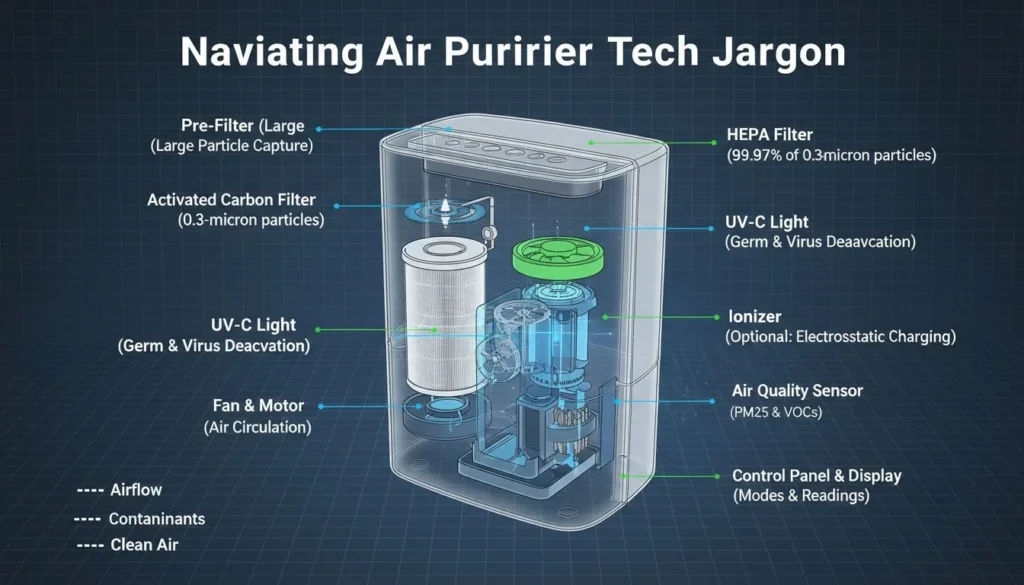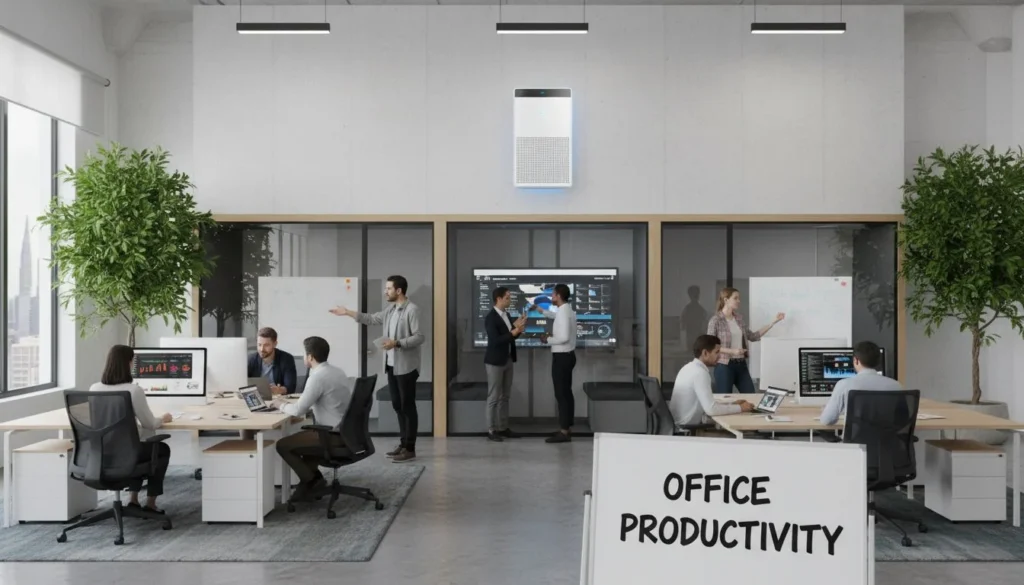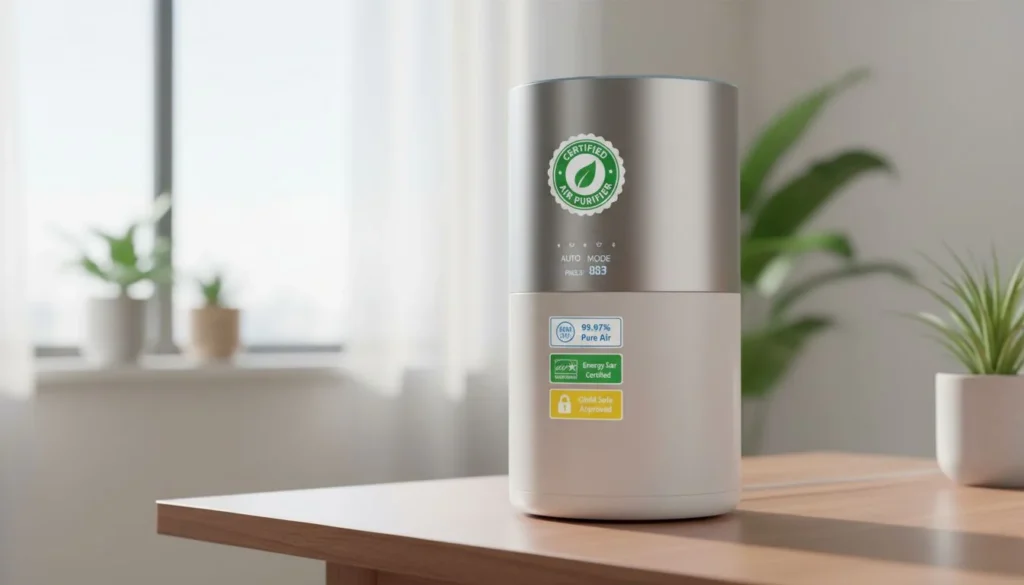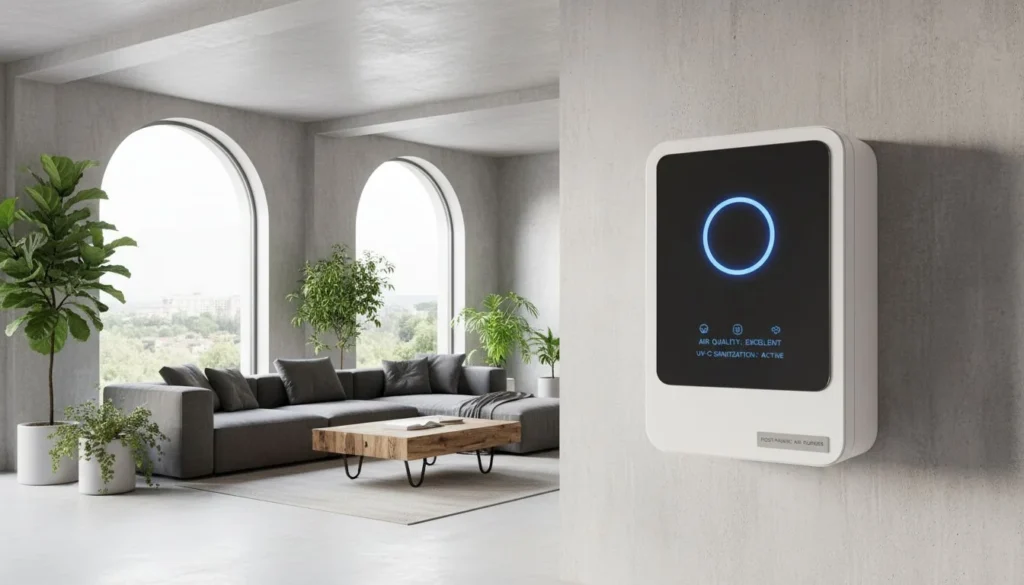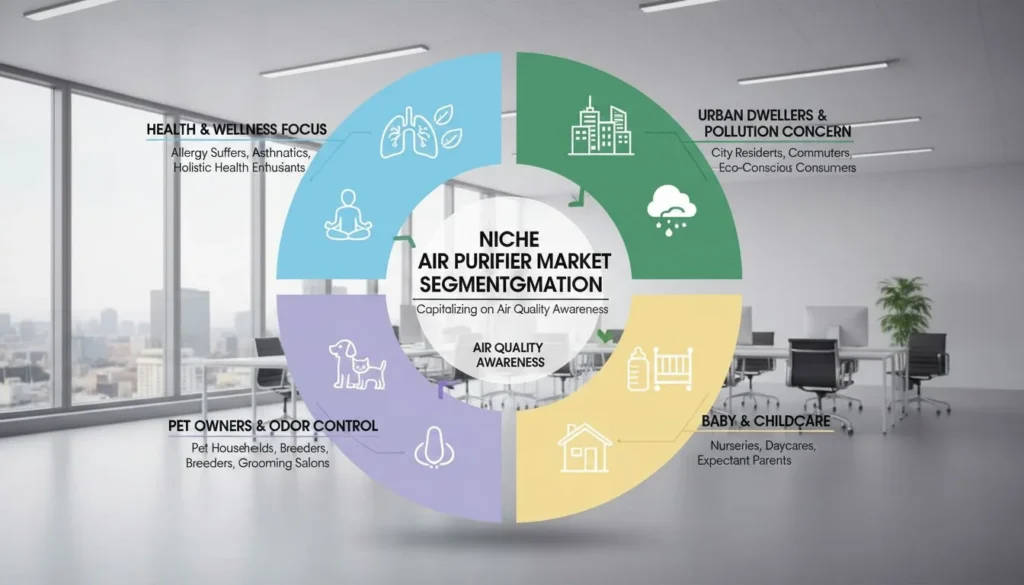
We all want to breathe clean air at home, but how can we be sure our air purifiers are really doing their job?
To effectively measure air purifier performance, focus on key metrics like CADR (Clean Air Delivery Rate), noise levels, and advanced technologies such as CCM (Clean Capture Measure). These factors provide a comprehensive understanding of a purifier's efficiency and effectiveness.
While CADR and noise levels offer a starting point, delving deeper into advanced technologies and performance metrics can provide a more nuanced evaluation. In the following sections, we'll explore these aspects in detail, helping you make informed decisions.
Higher CADR means better air purifier performance.True
CADR measures the volume of filtered air per minute; higher values indicate more efficient pollutant removal.
How Does CADR Impact Air Purifier Effectiveness?
Curious about what makes an air purifier truly effective? It might all come down to CADR!
CADR, or Clean Air Delivery Rate, is crucial for determining an air purifier's effectiveness. It measures the volume of filtered air delivered by the purifier per minute. A higher CADR indicates better performance, particularly for removing specific pollutants like smoke, pollen, and dust from indoor environments.
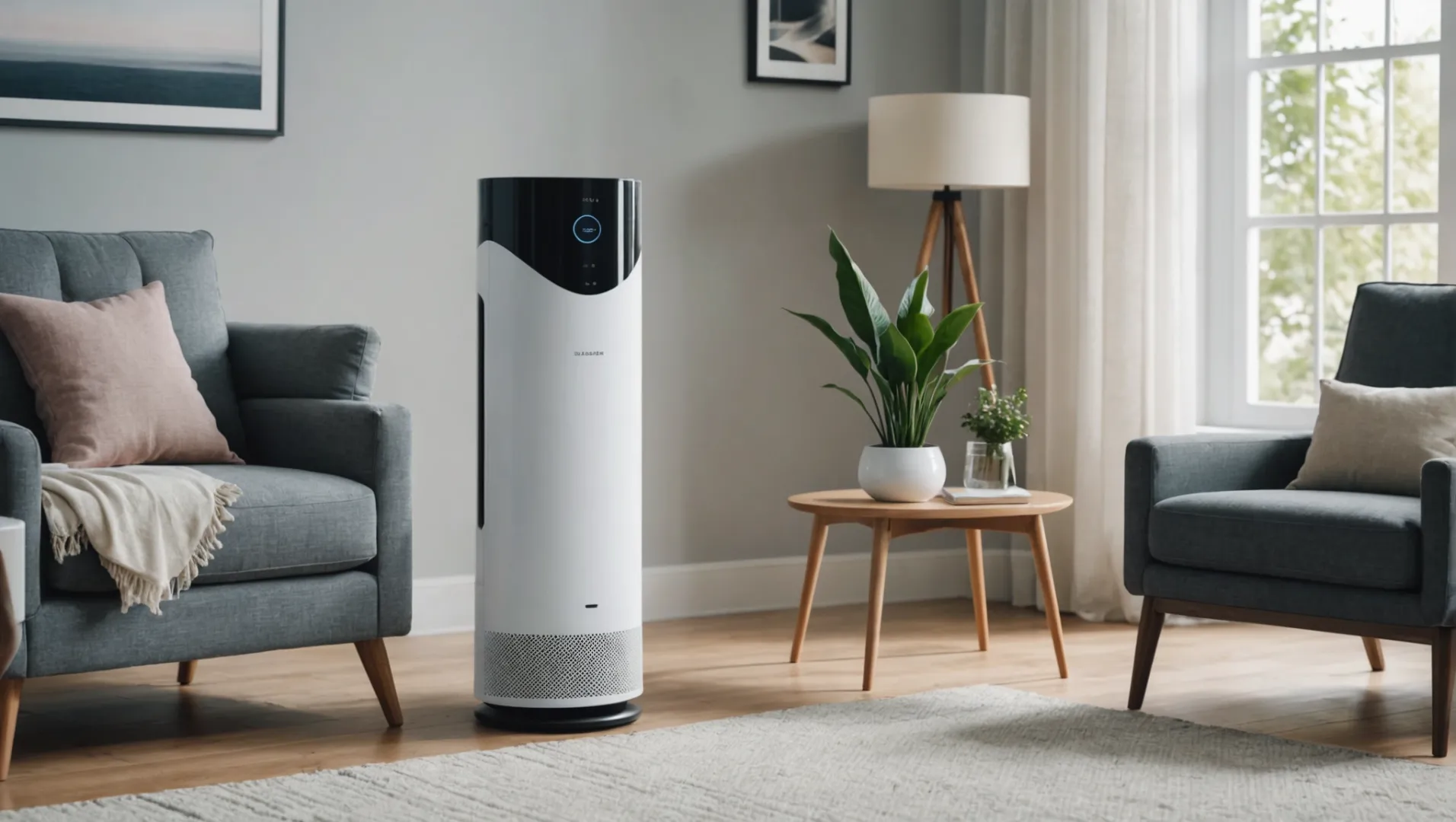
Understanding CADR and Its Importance
CADR, or Clean Air Delivery Rate, is a metric used to assess how well an air purifier cleans the air in a particular room size. This rate is determined by measuring how much air is filtered of specific particles, like smoke, dust, and pollen, within a certain period.
| Pollutant Type | Description |
|---|---|
| Smoke | Represents the smallest particle size an air purifier can handle effectively. |
| Dust | Indicates general air cleanliness and the air purifier’s ability to remove larger particles. |
| Pollen | Measures efficiency in capturing airborne allergens. |
A higher CADR value signifies more efficient filtration. For example, if you're struggling with allergies, you would want an air purifier with a high CADR for pollen to ensure it effectively removes these allergens from your space.
CADR vs. Room Size
Selecting an air purifier with a CADR appropriate for your room size is essential. Generally, the higher the CADR number, the larger the room it can purify effectively. Using a purifier with a lower CADR than required for your room size may result in inadequate air cleaning.
Balancing CADR with Noise Levels
While a high CADR is desirable for quick and efficient purification, it often comes with increased noise levels due to higher fan speeds. Brands like HisoAir have innovated around this with technologies that balance high CADR with noise reduction1. This means you don't have to sacrifice peace and quiet for clean air.
Advanced Technologies Enhancing CADR
Some modern air purifiers utilize advanced filter technologies like CCM (Clean Capture Measure) to enhance their performance further. CCM technology allows for improved longevity and efficiency of filters, contributing to a sustained high CADR over time. This not only helps in maintaining air quality but also reduces long-term maintenance costs.
Higher CADR means better air purifier performance.True
CADR measures the volume of filtered air; higher values indicate better effectiveness.
Low CADR is suitable for large rooms.False
A low CADR may not adequately clean air in larger spaces, reducing effectiveness.
Why Is Noise Level an Important Factor?
Ever wondered why noise level is a crucial aspect of air purifiers? It's more than just about the decibels.
Noise level in air purifiers significantly impacts user comfort and operational efficiency. High noise can deter continuous use, while low noise levels ensure comfort, especially in bedrooms or offices. Balancing noise with performance is key to an effective air purifier.
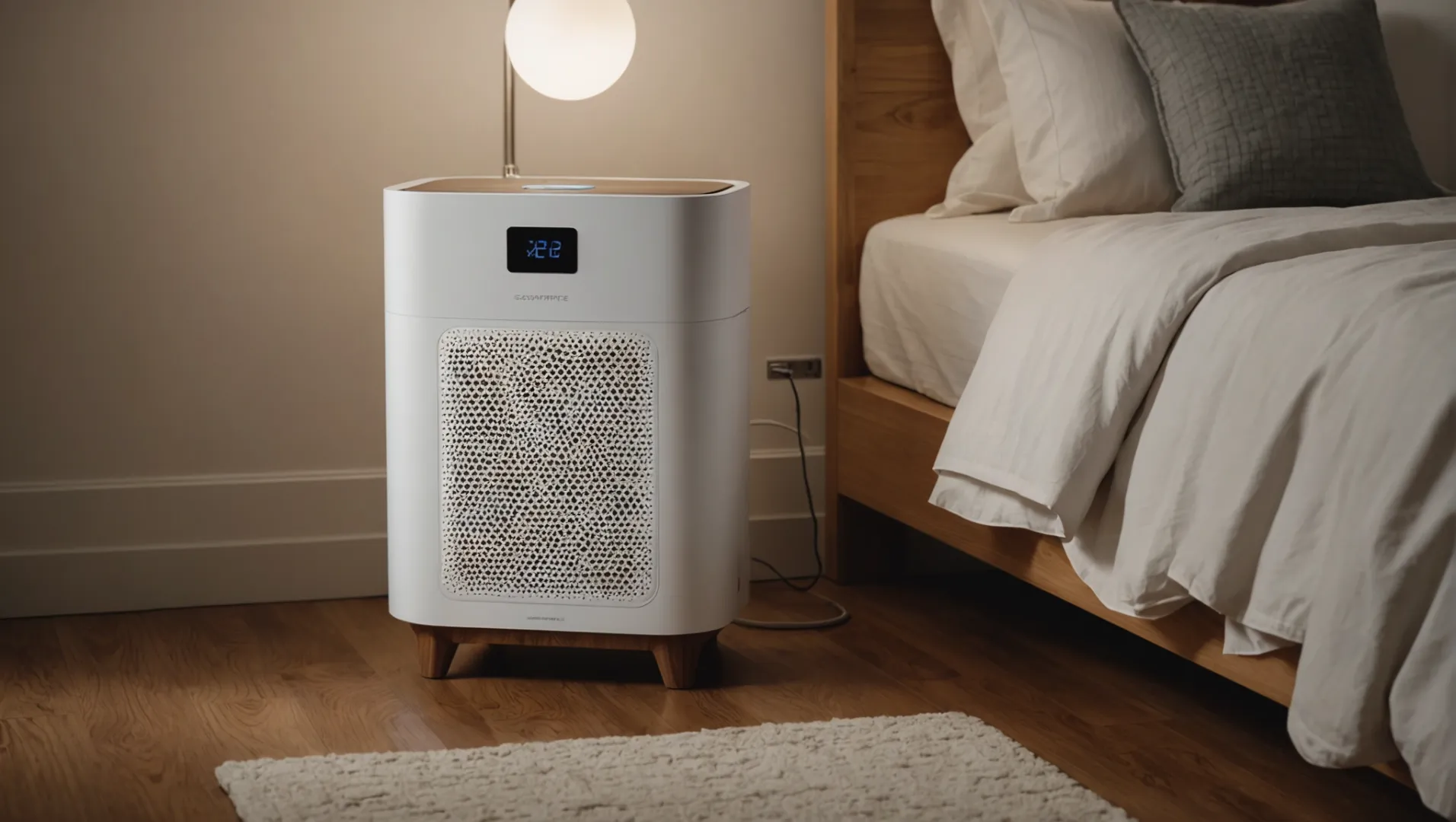
The Importance of Noise Level in Daily Life
When selecting an air purifier, the noise level is often overlooked despite its significant impact on daily life. Imagine placing an air purifier in your bedroom that hums louder than a refrigerator. This can disrupt sleep, leading to discomfort and dissatisfaction. A quieter device ensures it operates without intrusion, making it suitable for bedroom use2.
Balancing Performance and Comfort
A common misconception is that high-performance air purifiers inherently produce more noise due to their powerful motors and fans. However, advancements like decibel cancellation technology challenge this notion. Brands like HisoAir have pioneered this technology, creating units that maintain high Clean Air Delivery Rates (CADR) while keeping noise at a minimum. This technology allows users to enjoy the benefits of powerful air cleaning without compromising comfort.
Noise Level and Air Flow
Typically, larger airflow means higher noise levels, posing a challenge for manufacturers. However, some companies have managed to design models that optimize both airflow and noise levels. For instance, HisoAir's models leverage innovative design elements to ensure powerful air circulation with minimal sound production.
Evaluating Noise Levels
When assessing an air purifier's suitability for your space, check the decibel rating provided by manufacturers. As a rule of thumb, an air purifier should operate below 50 decibels for sleeping areas. Below is a simple guide to understanding noise levels:
| Decibel Level | Perceived Noise Level |
|---|---|
| 30 dB | Whisper |
| 40 dB | Quiet library |
| 50 dB | Moderate office noise |
| 60 dB | Normal conversation |
Understanding these metrics helps in choosing an air purifier that balances cleaning efficiency with comfort, ensuring you don't sacrifice peace for performance.
High noise levels deter air purifier use.True
Loud air purifiers can disrupt sleep and reduce user comfort.
Decibel cancellation technology increases noise.False
This technology reduces noise while maintaining air purifier performance.
What Role Does Decibel Cancellation Technology Play?
Imagine enjoying clean, fresh air at home without the annoyance of loud humming sounds from your air purifier.
Decibel cancellation technology minimizes noise in high-performance air purifiers, ensuring a quieter and more comfortable indoor environment. This technology allows air purifiers to operate efficiently without the disruptive noise typically associated with powerful airflow, making them more suitable for home use.
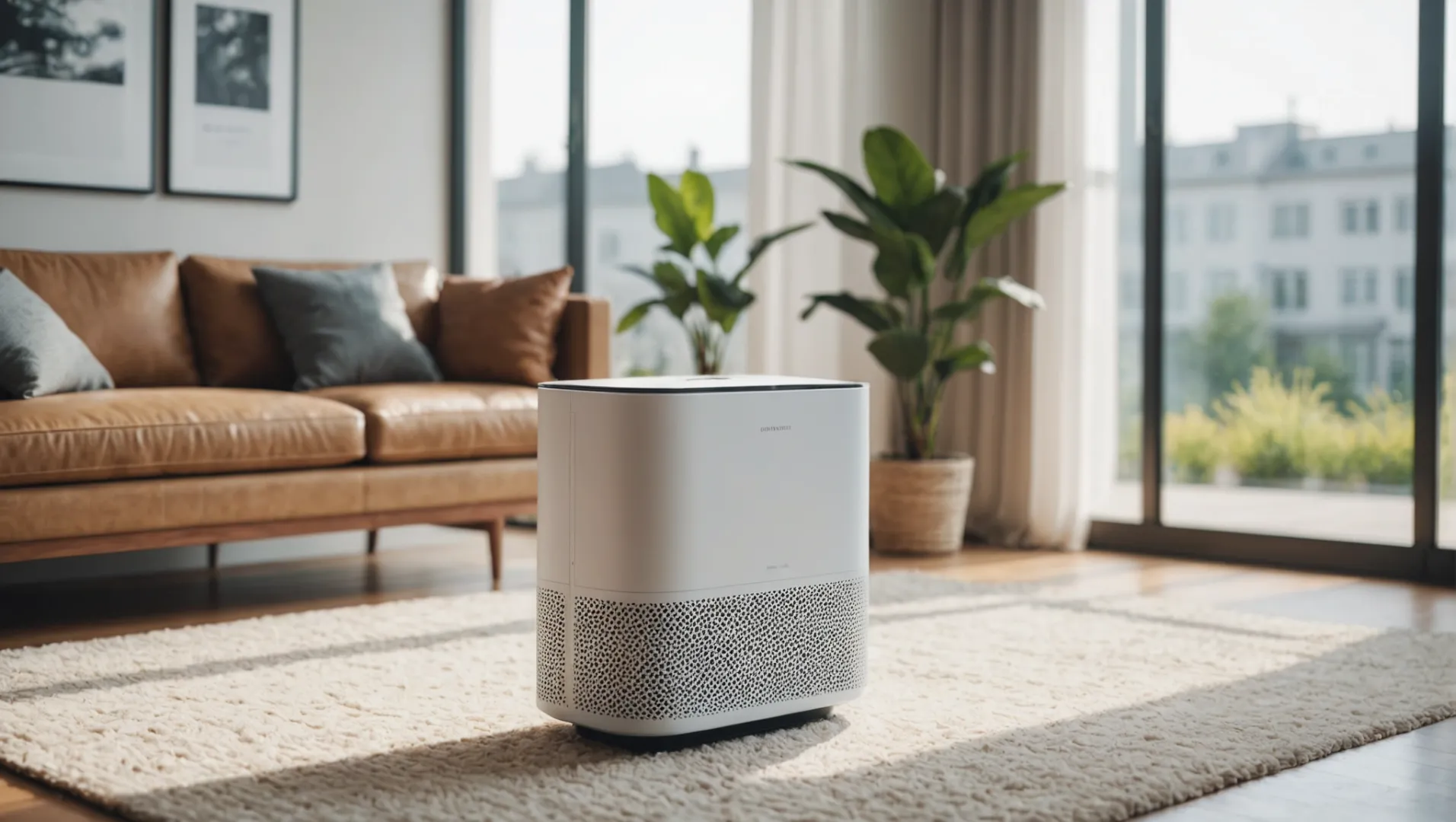
Understanding Decibel Cancellation Technology
Decibel cancellation technology is a cutting-edge innovation that significantly reduces noise produced by air purifiers. It works by emitting sound waves that are the exact opposite (antiphase) of the noise generated by the device. When these sound waves collide, they cancel each other out, leading to a quieter operation. This process is particularly beneficial in environments where silence is valued, such as in homes or offices.
Benefits of Decibel Cancellation in Air Purifiers
One of the primary advantages of decibel cancellation technology is the ability to maintain a high CADR3 without increasing noise levels. CADR, or Clean Air Delivery Rate, is a crucial metric that indicates how quickly an air purifier can clean a room of airborne particles. Typically, a higher CADR means more airflow, which can lead to increased noise. However, decibel cancellation mitigates this issue, allowing for both high performance and quiet operation.
HisoAir, for instance, has integrated decibel cancellation into their products, leveraging over 20 years of expertise to develop some of the quietest and most efficient air purifiers available. This technology not only enhances user comfort but also aligns with modern lifestyle demands where peace and tranquility are highly valued.
A Look at Future Trends
As consumer demand for quieter appliances grows, the role of decibel cancellation technology is likely to expand. It's expected that more manufacturers will adopt this technology, not just in air purifiers but across various household devices. This shift will facilitate a new standard of living where high performance no longer comes at the cost of comfort.
Comparing Noise Levels
| Brand | Noise Level (dB) | CADR (m³/h) | Special Features |
|---|---|---|---|
| HisoAir | 25 dB | 350 | Decibel Cancellation |
| Brand X | 45 dB | 300 | Standard Operation |
| Brand Y | 50 dB | 320 | Enhanced Filtration |
This table showcases how decibel cancellation can lower noise levels significantly while maintaining or even improving air purifier performance.
Decibel cancellation technology offers a harmonious blend of efficiency and serenity, making it a pivotal aspect of modern air purifiers.
Decibel cancellation reduces air purifier noise.True
Decibel cancellation emits antiphase sound waves to cancel noise.
Higher CADR increases air purifier noise levels.False
Decibel cancellation allows high CADR without increasing noise.
How Can CCM Influence Filter Longevity and Cost Savings?
Discover how CCM technology not only extends filter life but also reduces costs.
CCM (Clean Capture Measure) enhances filter longevity by capturing more particulates, thus reducing replacement frequency and associated costs. This metric helps evaluate the long-term efficiency and economic benefits of air purifiers, making it a crucial consideration for consumers.
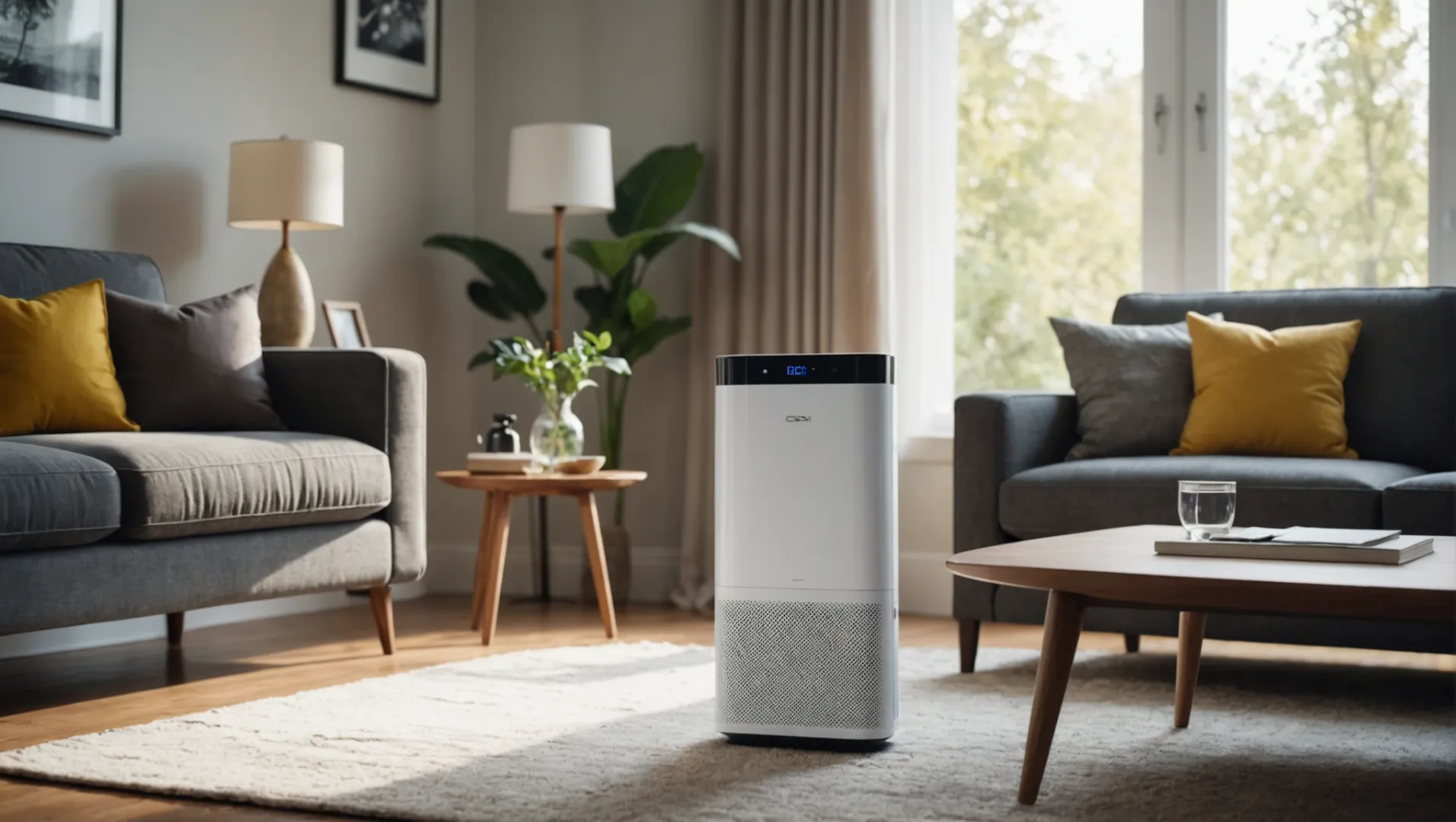
Understanding CCM in Air Purifiers
CCM, or Clean Capture Measure, is an emerging metric that is revolutionizing how consumers assess the long-term value of air purifiers. Unlike traditional metrics such as CADR, which focuses on air purification speed, CCM emphasizes the filter's capacity to capture and retain particulates over time. This means filters with higher CCM ratings can capture more particles before needing replacement, leading to enhanced longevity and cost savings.
Longevity Through Enhanced Particle Retention
The core principle of CCM is its ability to retain larger volumes of contaminants. Air purifiers with high CCM ratings, like those developed by companies with advanced technologies such as HisoAir, are equipped with filters designed to trap more dust, pollen, smoke, and other airborne particles. This increased capacity delays the point at which filters become clogged and ineffective, extending their usable life.
Economic Benefits of Higher CCM Ratings
From a cost perspective, investing in an air purifier with a superior CCM rating can result in significant savings over time. Fewer filter replacements mean reduced ongoing expenses, making these devices more economical for long-term use. For example, if a standard air purifier requires filter changes every six months, a high-CCM model might extend this interval to nine months or more.
| Feature | Standard Filter | High CCM Filter |
|---|---|---|
| Replacement Frequency | Every 6 months | Every 9+ months |
| Annual Cost | $60-$120 | $40-$80 |
Future Trends and Technological Advancements
As air quality concerns rise, the demand for efficient and cost-effective solutions grows. CCM is set to become a standard in evaluating air purifiers, with companies like HisoAir leading the charge in integrating high-performance filter media. With over 20 years of experience in air purification technology, they are not only improving air quality but also pioneering ways to make these advancements accessible and affordable to consumers.
To explore more about air purifier technologies and their impact on cost savings, consider checking out advanced air purification methods4.
CCM extends filter life by capturing more particles.True
CCM enhances filter longevity by retaining more particulates.
Higher CCM ratings lead to more frequent filter replacements.False
Higher CCM ratings reduce replacement frequency, saving costs.
Conclusion
Understanding these measurement techniques ensures your air purifier operates at its best for optimal indoor air quality.
-
Discover how HisoAir reduces noise while maintaining high CADR.: HiSo Air Purifiers utilize Decibel Cancellation™ Technology, allowing the use of less dense filters. Charged particles adhere more easily, reducing the need ... ↩
-
Explore quiet models perfect for nighttime use.: We've tested more than 60 air purifiers in the past nine years, and the exceptional Coway Airmega AP-1512HH Mighty is our top pick among them. ↩
-
Learn how CADR impacts air purifier performance and efficiency.: CADR, the Clean Air Delivery Rate, is a metric that was developed as a way of measuring the performance of air purifiers for home. The CADR rating reflects the ... ↩
-
Learn about cutting-edge air purification technologies that reduce expenses.: Certified air purifiers are over 25% more energy-efficient than standard models, saving over 120 kWh/year or $15 annually on utility bills. ↩


